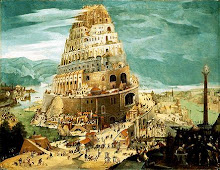...we know, for example, that when I raise my arm, there is a story to be told at the level of neuron firings, neurotransmitters and muscle contractions that is entirely sufficient to account for the movement of my arm. So if we are to suppose that consciousness also functions in the movement of my arm, then it looks like we have two distinct causal stories, neither reducible to the other; and to put the matter very briefly, my bodily movements have too many causes.Replace consciousness in the above, with "the spirit" and you have a pretty good first description of what most theists think is going on. It's just that, for a Christian this is not "too many causes" but in fact a very satisfying conclusion that more than one type of cause is going on, and neither can be reduced to the other.
There is no need to appeal to the complexity of the mind or consciousness to see that there are very often "too many causes" when we ask "why?" Consider the simple child's question: "why does it rain?" There are two distinct answers:
- Water from the oceans evaporates into the air, later condenses and falls, etc.
- God makes it rain to provide for us, to give us water to drink, grow our crops, etc.
In short, we're ignoring part of the "why" for either the watch or the sand. We skip over the need for the "causal" explanation for a watch because as humans, we think of our actions as "design" or purpose and not simply "caused" in the way a raindrop falls from the sky. For human-made objects, like a watch we ask only -"what purpose did the other human have when making this?" But in that Searle excerpt above, we face the fact that when neuroscience and other disciplines progress far enough, science WILL be able to tell us the "causal" why - the complete series of neural firing that addresses "what was the cause for the human actions that led to this watch" - on that I think Searle's view is inescapable. But if that is true, that we are left with two "why's" - "he made the watch to tell time" and the "various synapse firings etc."
Conversely, when we ask WHY in relation to the sand, we assume only the causal answer is relevant because sand was not made by humans. We watch Carl Sagan on Discovery tell us about how stars produce higher elements such as silicon, which end up as dust, and then in planets, etc. Only the "causal" why is addressed. None of it addresses "what was the purpose of the sand, if any?"
Here's the rub. Some scientists (or "physicalists" in philosophical terms) will claim "there was no purpose in the sand." The more precise ones will say "no purpose is necessary to explain the existance of sand." But of course, if we apply the inevitable "causal" explanation to come for why WE do a thing (our neurons firing) that will mean that there similarly is "no purpose necessary" to explain the existence of anything WE do - build a watch, read this blog, go off and watch sports instead, etc.
Cause never "needs" purpose and purpose is not a kind of cause. Science, study of the physical, did not investigate and "conclude" there was no purpose. It simply looks at causes until it has them and then moves to the next physical mystery. The physical study never addressed the question of "purpose" one way or another because it can't.
When a person realizes it is not acceptable to leave that "purposeful why" un-investigated, that's when they realize that one cause just isn't enough.


2 comments:
Vern, I gotta ask...
The notion that purpose must come from design seems, prima facia, a fallacy. Sometimes, purpose can come from design, as in the case of a carriage transporting cargo. Other times - more often, even - purpose comes from, well, re-purposing.
The wheel, for example, was not invented to drive an electrical generator - it was borrowed for that purpose. Nonetheless, the purpose of the flyweel in a generator engine IS to drive the belt.
Now, in cases where something's "physical" explanation is different from its purpose, you're right - two explanations is not "too many." However, I think you have a long way to go between "the world got here through these astrophysical/geological/biological/cultural processes" and "God made it for xxx, yyy, etc."
thoughts?
-Dan Sawyer
www.jdsawyer.net
Sorry Dan, I got WAY messed up in the blogger dashboard and totally missed this comment!
Actually, I'm not saying that purpose comes from design. I'm taking much more of a "parallelist" view, that things can/do have a purpose which is independent of whether we think of a think as "designed."
For example, a tree falling over on your car in a storm may have happened for some purpose. No one thinks of that as designed, and so it's a cleaner case to think about "where/how" do we see purpose in things.
The problem with the notion of "design" is that it's a very human specific thing. We see something different in a wheel than we do in a random pile of twigs, but that's just because we're good at sensing things others like us might have made. To an alien intelligence, or an honest physicist there is no fundamental difference in the random pile and the wheel, because there is no fundamentally difference in the patterns left by the wind vs. neurons and muscles.
Post a Comment